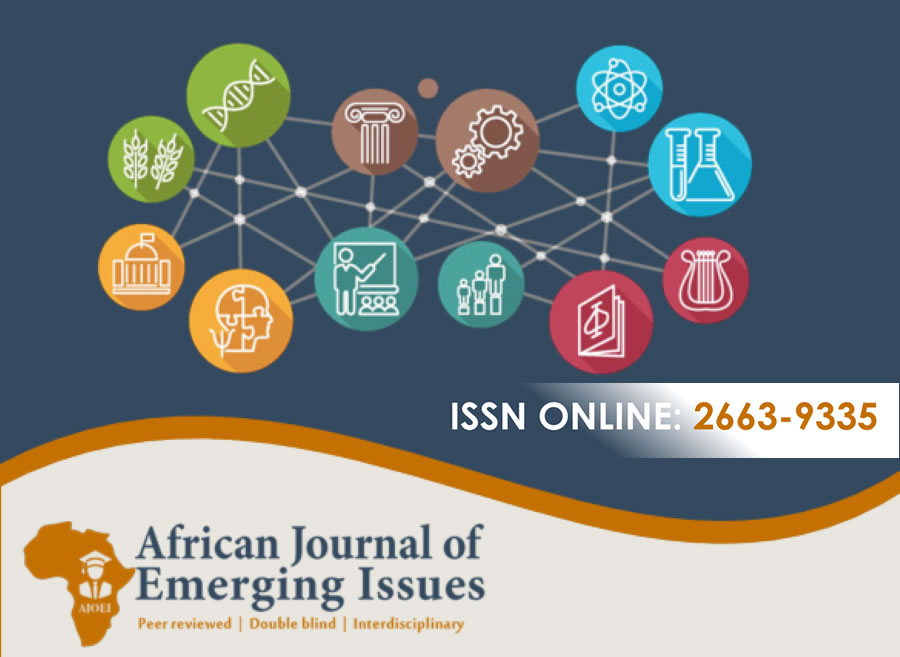STAKEHOLDER BUY-IN AND PERFORMANCE OF PUBLIC HEALTH SECTOR PROJECTS IN KENYA
Abstract
Statement of the Problem: Public health projects in Kenya have frequently experienced delays, cost overruns, and underperformance. A key contributor to these persistent challenges is the insufficient involvement of stakeholders during critical project phases, planning, implementation, and evaluation. Despite its importance, stakeholder engagement remains underemphasized, leading to limited project success.
Purpose of the Study: The purpose of this study was to investigate the role of stakeholder buy-in in determining the performance of public health initiatives in Kenya. The study explored how involving stakeholders early and consistently can influence the effectiveness, efficiency, and sustainability of these projects.
Research Methodology: The research utilized a mixed-methods design that combined both qualitative and quantitative approaches. Data were collected from a broad range of project stakeholders through structured questionnaires and interviews. Statistical analysis was employed to assess the strength of the relationship between stakeholder involvement and project performance.
Results: The study found a strong positive correlation between stakeholder buy-in and project success (r = 0.958), with stakeholder involvement explaining 90.1% of the variation in project performance (R² = 0.901). The data suggest that when stakeholders are actively engaged, particularly in the early stages of the project, there is a significant improvement in both project delivery and outcomes.
Conclusion: The findings emphasize that stakeholder engagement is not just a supportive function but a central component of successful public health project implementation. Active involvement fosters ownership, enhances decision-making, and contributes to more sustainable outcomes.
Recommendation: The study recommends that project managers prioritize stakeholder inclusion from the outset. Strategies should focus on empowering participants, fostering collaboration, and institutionalizing stakeholder engagement throughout the project lifecycle to ensure lasting impact and improved performance of public health programs in Kenya.
Keywords: Buy-in, Project Performance, Public Health, Kenya, Stakeholder Participation, Health Sector, Project Management
References
Anne, V., & Paul, S. N. A. (2019). Influence of stakeholder involvement on the successful implementation of projects at Kenya Railways Corporation in Kenya. Journal of Entrepreneurship and Project Management, 4(1), 52-77.
Aupe, N. D., & Sagwa, D. E. V. (2020). Influence of Stakeholders in Project Monitoring and Evaluation on Sustainability of Water Projects in Kwanza Sub-County Kenya. 13.
Bazimya, S. (2018). Influence of stakeholder’s participation on performance of public projects in Rwanda: a case study of water, sanitation and hygiene (wash) project in musanze district (Doctoral dissertation).
Dawadi, S., Shrestha, S., & Giri, R. A. (2021). Mixed-methods research: A discussion on its types, challenges, and criticisms. Journal of Practical Studies in Education, 2(2), 25-36.
Horning M, T. (2018). Successful Project Management. Walden Dissertations and Doctoral Studies
Jayasuriya, S., Zhang, G., & Yang, R. J. (2020). Exploring the impact of stakeholder management strategies on managing issues in PPP projects. International Journal of Construction Management, 20(6), 666-678.
Khan, N. N., & Puthussery, S. (2019). Stakeholder perspectives on public-private partnership in health service delivery in Sindh province of Pakistan: a qualitative study. Public health, 170, 1-9.
Mukhongo, P. D. (2021). An Analysis of the Determinants of Implementation of Information Technology Projects by Commercial Banks in Kenya (Doctoral dissertation, JKUAT-COHRED).
Musau, J. K. (2020). Project Management Practices Influence levels on Successful Implementation of Borehole Water Projects in Makueni County, Kenya (Doctoral dissertation, JKUAT-COHRED)
Nduthu, P. W. (2018). Project Implementation Process, Legal Framework and Performance of Projects: the Case of Indigenous Chicken Projects Sponsored by Agricultural Sector Development Support Programme in Machakos County, Kenya (Doctoral dissertation, University of Nairobi).
O’Brien, R. M., Phelan, T. J., Smith, N. M., & Smits, K. M. (2020). Remediation in developing countries: A review of previously implemented projects and analysis of stakeholder participation efforts. Critical Reviews in Environmental Science and Technology, 1–22. https://doi.org/10.1080/10643389.2020.1755203
Omondi, K. (2020). Stakeholder participation and performance of road construction projects in kilifi county, Kenya. International Academic Journal of Information Sciences and Project Management (IAJISPM) | ISSN 2519-7711
Pfeiffer, J., & Salancik, G. R. (1978). The External Control of Organizations: A Resource Dependence Perspective. University of Illinois at Urbana-Champaign› s Academy for Entrepreneurial Leadership Historical Research Reference in Entrepreneurship.
Rathenam, B. D. C., & Dabup, N. L. (2017). Impact of Community Engagement on Public Construction Projects--Case Study of Hammanskraal Pedestrian Bridge, City of Tshwane, South Africa. Universal journal of management, 5(9), 418-428.
Senaratne, S., & Ruwanpura, M. (2016). Communication in construction: a management perspective through case studies in Sri Lanka. Architectural Engineering and Design Management, 12(1), 3-18.
Wambui, G., Okech, T. C., & Olweny, T. (2020). Determinants of policy making in the Kenya’s public health sector. International Academic Journal of Economics and Finance, 3(5), 204-219.
Williams, A. S. (2017). Effective Stakeholder Management Strategies for Information Technology Projects. 137.
Wood, D. J., Mitchell, R. K., Agle, B. R., & Bryan, L. M. (2021). Stakeholder identification and salience after 20 years: Progress, problems, and prospects. Business & Society, 60(1), 196-245.
Zarewa, G. A. (2019). Barriers to effective stakeholder management in the delivery of multifarious infrastructure projects (MIPs). Journal of Engineering, Project, and Production Management, 9(2), 85-96.





